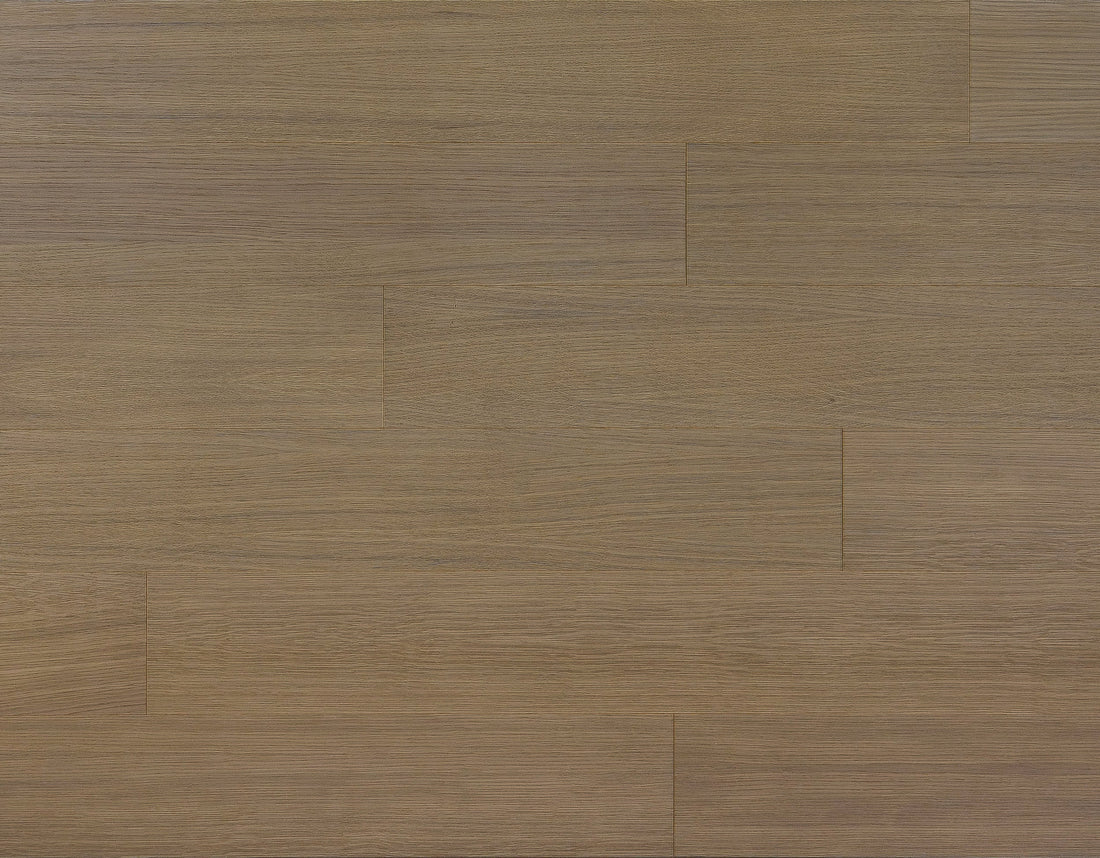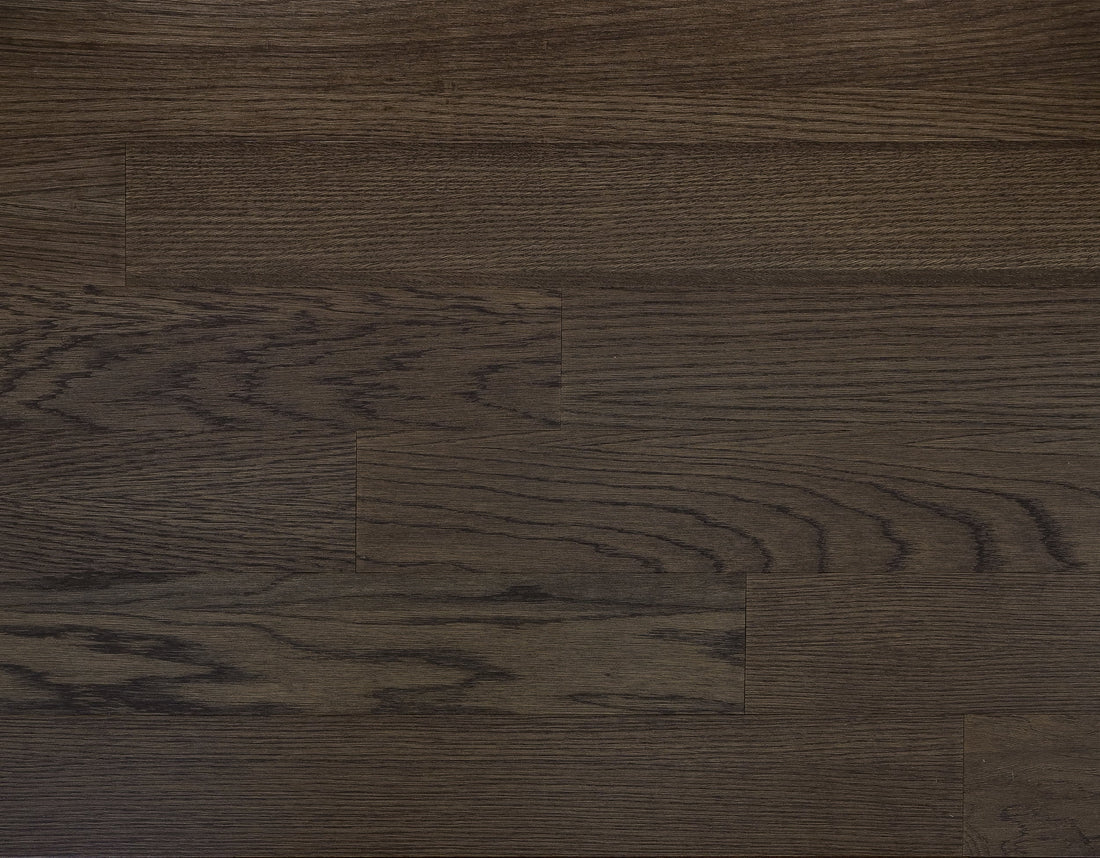Click & Lock VS Tongue & Groove?
Click & lock, tongue & groove flooring, are two common types of interlocking flooring systems used in the installation of engineered hardwood. While they both serve the same basic purpose of providing a secure and seamless flooring installation, they differ in their specific design and installation methods

Click & Lock System
Our click and tap profile is a simple, straightforward way to install without the need for nails, staples or glue. While similar to tongue and groove, click and tap flooring features a unique interlocking profile around its edge. This enables an easy DIY friendly floor that can be clicked, snapped and locked together.
Click & Lock Products
-
Click & Lock with Vacuubond® Adhesive 3/8 in. x 5 in. Engineered Hardwood Flooring
 Made To OrderClick & Lock with Vacuubond® Adhesive 3/8 in. x 5 in. Engineered Hardwood Flooring
Made To OrderClick & Lock with Vacuubond® Adhesive 3/8 in. x 5 in. Engineered Hardwood Flooring- Regular price
-
$7.49/Sq.Ft.
$172.27 /Box - Sale price
-
$7.49/Sq.Ft.
$172.27 /Box - Regular price
-
-
Anchor Click & Lock 3/8 in. x 5 in. Engineered Hardwood Flooring
 Anchor Click & Lock 3/8 in. x 5 in. Engineered Hardwood Flooring
Anchor Click & Lock 3/8 in. x 5 in. Engineered Hardwood Flooring- Regular price
-
$6.99/Sq.Ft.
$183.49 /Box - Sale price
-
$6.99/Sq.Ft.
$183.49 /Box - Regular price
-
-
Anchor Click & Lock Collection - 5" Sample Chips (6) colors
 Anchor Click & Lock Collection - 5" Sample Chips (6) colors
Anchor Click & Lock Collection - 5" Sample Chips (6) colors- Regular price
-
$3.00 - Sale price
-
$3.00 - Regular price
-
-
Anchor Click & Lock - 12" Samples (6) Colors
 Anchor Click & Lock - 12" Samples (6) Colors
Anchor Click & Lock - 12" Samples (6) Colors- Regular price
-
$5.00 - Sale price
-
$5.00 - Regular price
-
Click & Lock Info
-
Design and Interlocking System
This type of flooring features a click-lock or snap-lock design. The planks or tiles have specially designed edges with a tongue on one side and a groove on the other. To install them, you simply align the tongue of one plank with the groove of another and then press or click them together. The locking mechanism provides a tight, secure fit.
-
Installation Method
Installation is often considered easier and faster for DIYers because it doesn't require the use of adhesives or nails. The planks simply snap or click together, and they can often be floated over an underlayment or existing subfloor.
-
Durability and Stability
The click and lock design typically creates a strong and stable connection, reducing the likelihood of gaps or separation between planks. This makes it a good choice for areas with heavy foot traffic or for DIY installations.
-
Versatility
Click and lock systems are commonly used for floating floor installations. They are versatile and can be installed over various types of subfloors, including concrete, plywood, or existing flooring.

Tongue & Groove System
Our tongue and groove profile is truly innovative so you can be confident that once your flooring is installed, it is going to last for generations. Our highly experienced team of flooring manufacturing engineers have developed a tongue and groove construction that makes installation easy to accomplish whether you want to glue, float, nail or staple the floor in place.
Tongue & Groove Products
-
The Bold Collection 3/4 in. x 9.15 in. Engineered Hardwood Flooring
 New ProductThe Bold Collection 3/4 in. x 9.15 in. Engineered Hardwood Flooring
New ProductThe Bold Collection 3/4 in. x 9.15 in. Engineered Hardwood Flooring- Regular price
-
$12.49/Sq.Ft.
$299.76 /Box - Sale price
-
$12.49/Sq.Ft.
$299.76 /Box - Regular price
-
-
Woodland Treasures 5/8 in. x 7.5 in. x 95.5 in. Long Plank Engineered Hardwood Flooring
 Woodland Treasures 5/8 in. x 7.5 in. x 95.5 in. Long Plank Engineered Hardwood Flooring
Woodland Treasures 5/8 in. x 7.5 in. x 95.5 in. Long Plank Engineered Hardwood Flooring- Regular price
-
$9.99/Sq.Ft.
$239.76 /Box - Sale price
-
$9.99/Sq.Ft.
$239.76 /Box - Regular price
-
-
Wood Vineyard Pinot 3/8 in. x 5 in. Wire Brushed Engineered Hardwood Flooring
 Wood Vineyard Pinot 3/8 in. x 5 in. Wire Brushed Engineered Hardwood Flooring
Wood Vineyard Pinot 3/8 in. x 5 in. Wire Brushed Engineered Hardwood Flooring- Regular price
-
$5.99/Sq.Ft.
$154.24 /Box - Sale price
-
$5.99/Sq.Ft.
$154.24 /Box - Regular price
-
-
Choice Collection 1/2 in. x 7.5 in. Engineered Hardwood Flooring
 Choice Collection 1/2 in. x 7.5 in. Engineered Hardwood Flooring
Choice Collection 1/2 in. x 7.5 in. Engineered Hardwood Flooring- Regular price
-
$7.99/Sq.Ft.
$199.75 /Box - Sale price
-
$7.99/Sq.Ft.
$199.75 /Box - Regular price
-
Tongue & Groove Info
-
Design and Interlocking System
Tongue and groove flooring also have specially milled edges, but they have a more traditional tongue-and-groove design. The tongue of one plank fits into the groove of the adjacent plank, creating a strong, interlocking connection. This design has been used for centuries in various applications, including hardwood flooring.
-
Installation Method
Installing tongue and groove flooring typically involves more steps. You'll need to apply adhesive to the grooves or use nails or staples to secure the planks to the subfloor. It's a more traditional installation method and may require more skill and tools.
-
Durability and Stability
Tongue and groove flooring also offers durability and stability, but the quality of installation and subfloor preparation can have a significant impact on its performance.
-
Versatility
Tongue and groove flooring is often used for nail-down or glue-down installations. It may be a better choice for certain types of hardwood or engineered hardwood floors.









